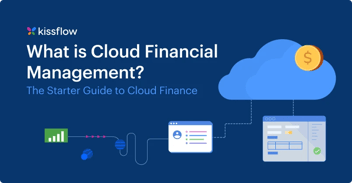Understanding how depreciation works and how to best handle it is vital to effectively manage your organization’s fixed asset management. Finding the fixed asset depreciation methods that work for you in practice can save your business significant time and administration, not to mention money.

What is depreciation and how does fixed asset depreciation work?
Depreciation is the term we use for the loss of value of a fixed asset during its lifetime. Generally speaking, depreciation only occurs in fixed assets, such as property, vehicles, or machinery as they are tangible, physical assets that your business owns. Although both fixed assets and other intangible assets, such as trademarks or branding, show on your company’s balance sheet for accounting purposes, only fixed assets are able to be depreciated for tax purposes.
What’s more, not all fixed assets are eligible to be depreciated over time. For example, they should have a value higher than $500, and they should also have a useful operating life of over one year. This discounts stock and inventory, as this type of asset generally moves through a business at a faster rate and is not usually retained for longer than a year.
The 4 main types of fixed asset depreciation methods
You may be surprised to hear that there are actually a number of ways to calculate the depreciation rate of an asset and make a fixed asset depreciation entry. Though at face value, this seems overly complicated, it is actually very useful as it gives an organization a standard way to depreciate an asset, depending on a number of factors. Let’s take a closer look at how to calculate the monthly depreciation of a fixed asset:
1. Straight-line method
Arguably, the most common and popular depreciation method is the straight-line method. Praised for its simplicity, it works by reducing the value of the asset by the same amount every year for the length of its usable life.
2. Units of production depreciation method
The units of production depreciation method aim to reduce the value of an asset using the total number of hours it is used (or the total number of units that it produces) during the course of its useful life.
3. Declining balance depreciation method
The declining balance depreciation method is different from the straight-line method in that it distributes the asset depreciation unevenly throughout its life. It has higher expenses in the early years based on the assumption that assets have higher productivity at this time as opposed to the later years of its lifespan.
4. Sum of the years’ digits method
The sum of the years’ digits method is similar to the units of production depreciation method in that it recognizes the higher expense that is incurred in the early years of the asset’s life.
Factors for determining fixed asset depreciation
It can be hard to know which fixed asset depreciation methods of the four above to choose for the fixed assets in your organization. Much depends on the type of assets you have and how they are used.
For example, the straight-line depreciation method could be the most appropriate if you have assets such as buildings, which are used for an equal amount during each year of its useful life.
Conversely, if you have a fixed asset that you use more in the early years of its life than in the later years, the declining balance method could be useful. An example of this could be a business vehicle that is used less as it ages.
If your assets generate measurable output in units during each period, such as a piece of machinery, the units of production method may be most appropriate.
How fixed asset depreciation software works
Fixed asset depreciation software is an effective way of managing your company’s assets. The right asset management software will have functionalities to make a new fixed asset depreciation entry to your accounting records and then calculate depreciation rates automatically, based on the depreciation method of your choice. It should have the ability to use more than one method where appropriate for comparison purposes. Fixed asset depreciation software is the perfect way to ensure that the regular depreciation of your fixed assets is done uniformly, consistently, and accurately, without relying on error-prone manual calculations.
Find fixed asset depreciation methods that work for your business
Take the time to analyze the type of fixed assets that your organization owns, as well as how they are used. This will allow you to choose fixed asset depreciation methods that are appropriate for each asset and are capable of giving you accurate and cost-effective insights.









.webp?width=285&height=570&name=Kissflow-Asset-management%20(2).webp)



